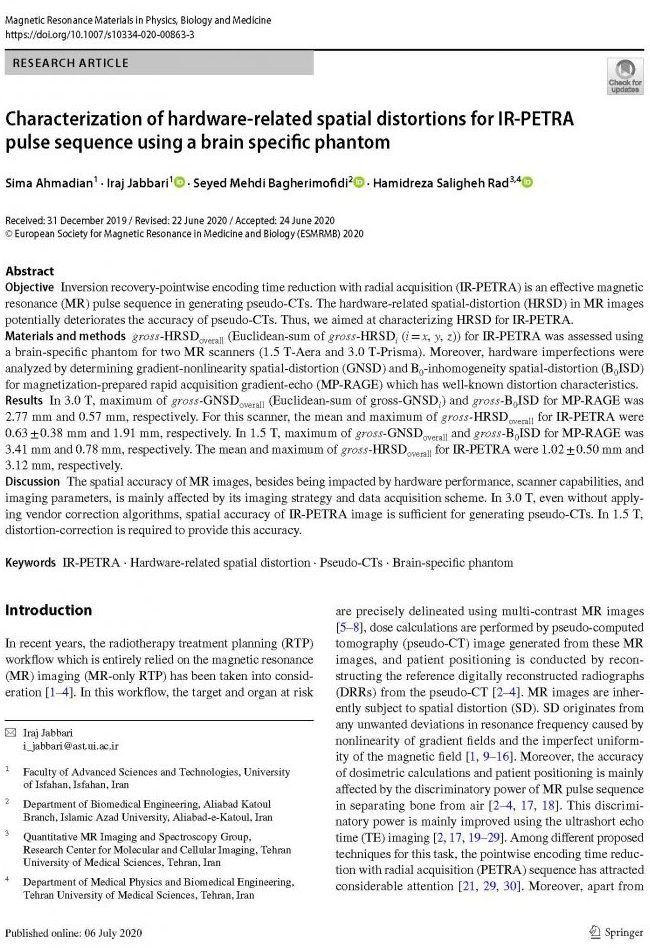Characterization of hardware-related spatial distortions for IR-PETRA pulse sequence using a brain specific phantom
Abstract
Objective:
Inversion recovery-pointwise encoding time reduction with radial acquisition (IR-PETRA) is an effective magnetic resonance (MR) pulse sequence in generating pseudo-CTs. The hardware-related spatial-distortion (HRSD) in MR images potentially deteriorates the accuracy of pseudo-CTs. Thus, we aimed at characterizing HRSD for IR-PETRA.
Materials and methods:
gross-HRSDoverall (Euclidean-sum of gross-HRSDi (i = x, y, z)) for IR-PETRA was assessed using a brain-specific phantom for two MR scanners (1.5 T-Aera and 3.0 T-Prisma). Moreover, hardware imperfections were analyzed by determining gradient-nonlinearity spatial-distortion (GNSD) and B0-inhomogeneity spatial-distortion (B0ISD) for magnetization-prepared rapid acquisition gradient-echo (MP-RAGE) which has well-known distortion characteristics.
Results:
In 3.0 T, maximum of gross-GNSDoverall (Euclidean-sum of gross-GNSDi) and gross-B0ISD for MP-RAGE was 2.77 mm and 0.57 mm, respectively. For this scanner, the mean and maximum of gross-HRSDoverall for IR-PETRA were 0.63 ± 0.38 mm and 1.91 mm, respectively. In 1.5 T, maximum of gross-GNSDoverall and gross-B0ISD for MP-RAGE was 3.41 mm and 0.78 mm, respectively. The mean and maximum of gross-HRSDoverall for IR-PETRA were 1.02 ± 0.50 mm and 3.12 mm, respectively.
Discussion:
The spatial accuracy of MR images, besides being impacted by hardware performance, scanner capabilities, and imaging parameters, is mainly affected by its imaging strategy and data acquisition scheme. In 3.0 T, even without applying vendor correction algorithms, spatial accuracy of IR-PETRA image is sufficient for generating pseudo-CTs. In 1.5 T, distortion-correction is required to provide this accuracy.

